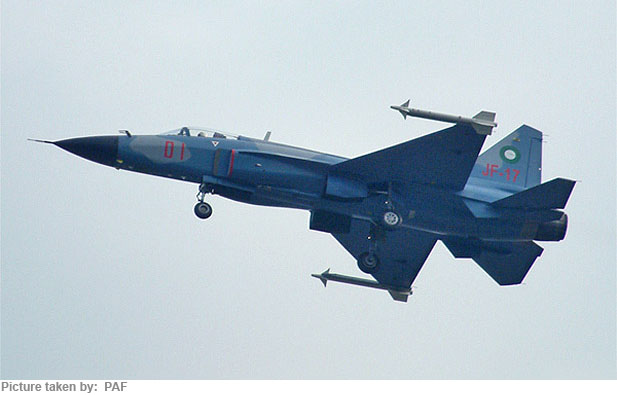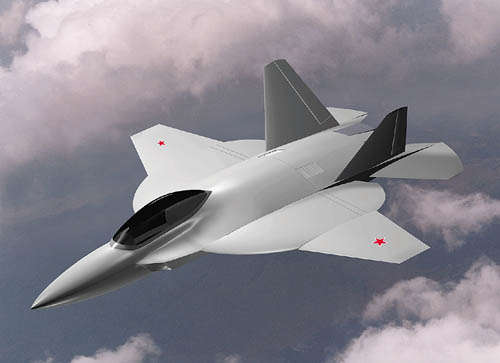Wednesday, January 28, 2009
Developed countries, preventing development of other countries by unhealthy competition?
One aspect which is Interesting is how, whenever India achieves something that is commendable, the developed countries tend to trace it to some knowhow, quipment or man power that was provided by the west. It is greatly amusing, how the development of other countries scares and pierces the developed countries, turning them green with envy, esp, USA. For e.g., India became one of the four nations to have a satellite launch facility in 1980 with the launch of Rohini. Within a week, news originated from USA, Germany, and others that India had stolen it from USA. The technology was completely indeginious,it used sharing logic software for its first stage that was the first of its kind in the world. As for Scout, the American SLV from which was alleged the techbology was picked only the fifth launch had proved successfully, in contrast to the indian SLV. Another instance is Prithvi missile, which had used a particular gyo system, with an unique software, which nobody in the world had tried. It had other innovations too: including the thrust termination. Today, Prithvi is probably the best in payload capability. But the west couldn't bear to see India rising. Same was with the unique 'Agni' in which USA, and Germany wanted to take credit. Agni has an entirely new gudance technolgy, able to maneoivre the paykoad and the complete re-entry hypersonic flow was stimulated in the Computational Fluid Dyanamics in one of the best computers tht India had herself designed. It also uses a specially designed material. Same was with the Pokhran nuclear tests, that used an entirely new, innovative triggering mechanism. It is really amusing that the Americans think that it is only with their technology that the world can suceed. When will American learn to appreciate others achievements? When will they accept that they are not the best? When will they mature?
Monday, January 26, 2009
Where did India's skilled labor come from? The surprising role of private education
One obvious prerequisite for the Bangalore boom was India's high-tech labor force. Most commentators credit India's technical prowess to socialist rulers who, in a bid to make the country an industrial power, "overinvested" in engineering and other professional colleges. Even as secondary school education languished, they built a slew of super-elite engineering colleges called IITs (Indian Institutes of Technology) and a network of regional engineering colleges to train workers for state-owned heavy industry companies.
But the government's "overinvestment" in education was not nearly enough to meet the massive demand among India's middle classes for professional degrees, their ticket to secure jobs even before the information technology boom. The biggest unmet demand, notes Economic Times correspondent Chidanand Rajghatta, was among upper-caste Hindus who were frozen out of most government colleges by admissions quotas that reserved up to 70 percent of their seats for lower castes and religious minorities.
In the 1960s and '70s, religious and philanthropic organizations picked up the slack by founding private engineering colleges of their own, often of substandard quality. But as the I.T. industry grew in the '90s, so did the number of private engineering colleges and polytechnics. Today, four out of five engineering students attend private colleges, even though those institutions charge five to 10 times more in tuition than government colleges. The private schools also demand an upfront entry or "capitation" fee equivalent to about $3,000 to $4,000--a small fortune for middle-class families. The quality of these schools still varies a great deal, notes Vijay Menon of Progeon, the Bangalore-based outsourcing arm of the I.T. company Infosys. "But many of them have built a brand name for themselves by the stellar performance of their graduates on the American GRE," he adds.
This market has thrived even though new colleges face high legal barriers to entry. For instance, private colleges are not allowed to confer degrees unless they can persuade the University Grants Commission, a government body, to grant them an affiliation with a government university. But government universities, without whose acquiescence the commission cannot act, have little incentive to let new, private entrants loosen their stranglehold.
Despite all these hurdles, Karnataka (along with a couple of other south Indian states) has always had a robust private sector in the higher education market that has been a trailblazer for the rest of the country. Now it has nearly twice as many private professional colleges as government ones.
The government's role in providing higher education has shrunk over the years because it simply did not have the money to keep subsidizing it. But this is a blessing in disguise, argues C.K. Prahlad, a professor of management at the University of Michigan. The I.T. boom has strained Bangalore's capacity to supply workers. So fierce is the competition for qualified employees that the average I.T. company in Bangalore loses about 70 percent of its trained work force every year to rival firms. The strong presence of private-sector technical schools gives I.T. companies a far better chance of addressing the worker shortage than of addressing the shortage of roads, power supply, and other public-sector infrastructure.
Furthermore, unlike government colleges, the private schools have a vested interest in delivering graduates with skills suited for the industry. "Otherwise," Prahlad notes, "they can't justify their hefty capitation fees."
General education in southern India has become much more job-relevant because private, autonomous colleges play a bigger role there than they do in the north, says Progeon's Menon. For instance, his wife, a professor of English literature, teaches at a college that offers bachelor's degrees not in English but in communications and English, a field with more direct relevance to the growing public affairs departments of large companies. Today the I.T. industry is working ever more closely with colleges to develop new programs, something that will ensure jobs for their graduates and reduce the training expenditures of companies.
COPYRIGHT 2006 Reason FoundationCOPYRIGHT 2006 Gale Group
But the government's "overinvestment" in education was not nearly enough to meet the massive demand among India's middle classes for professional degrees, their ticket to secure jobs even before the information technology boom. The biggest unmet demand, notes Economic Times correspondent Chidanand Rajghatta, was among upper-caste Hindus who were frozen out of most government colleges by admissions quotas that reserved up to 70 percent of their seats for lower castes and religious minorities.
In the 1960s and '70s, religious and philanthropic organizations picked up the slack by founding private engineering colleges of their own, often of substandard quality. But as the I.T. industry grew in the '90s, so did the number of private engineering colleges and polytechnics. Today, four out of five engineering students attend private colleges, even though those institutions charge five to 10 times more in tuition than government colleges. The private schools also demand an upfront entry or "capitation" fee equivalent to about $3,000 to $4,000--a small fortune for middle-class families. The quality of these schools still varies a great deal, notes Vijay Menon of Progeon, the Bangalore-based outsourcing arm of the I.T. company Infosys. "But many of them have built a brand name for themselves by the stellar performance of their graduates on the American GRE," he adds.
This market has thrived even though new colleges face high legal barriers to entry. For instance, private colleges are not allowed to confer degrees unless they can persuade the University Grants Commission, a government body, to grant them an affiliation with a government university. But government universities, without whose acquiescence the commission cannot act, have little incentive to let new, private entrants loosen their stranglehold.
Despite all these hurdles, Karnataka (along with a couple of other south Indian states) has always had a robust private sector in the higher education market that has been a trailblazer for the rest of the country. Now it has nearly twice as many private professional colleges as government ones.
The government's role in providing higher education has shrunk over the years because it simply did not have the money to keep subsidizing it. But this is a blessing in disguise, argues C.K. Prahlad, a professor of management at the University of Michigan. The I.T. boom has strained Bangalore's capacity to supply workers. So fierce is the competition for qualified employees that the average I.T. company in Bangalore loses about 70 percent of its trained work force every year to rival firms. The strong presence of private-sector technical schools gives I.T. companies a far better chance of addressing the worker shortage than of addressing the shortage of roads, power supply, and other public-sector infrastructure.
Furthermore, unlike government colleges, the private schools have a vested interest in delivering graduates with skills suited for the industry. "Otherwise," Prahlad notes, "they can't justify their hefty capitation fees."
General education in southern India has become much more job-relevant because private, autonomous colleges play a bigger role there than they do in the north, says Progeon's Menon. For instance, his wife, a professor of English literature, teaches at a college that offers bachelor's degrees not in English but in communications and English, a field with more direct relevance to the growing public affairs departments of large companies. Today the I.T. industry is working ever more closely with colleges to develop new programs, something that will ensure jobs for their graduates and reduce the training expenditures of companies.
COPYRIGHT 2006 Reason FoundationCOPYRIGHT 2006 Gale Group
Friday, January 23, 2009
Poem on Agni missile- By Dr. APJ Abdul Kalam
Do not look at Agni
as an entity directed upwards
to deter the ominuous
or exihibit your might
It is fire
in the heart of an Indian
Do not give it
the form of a missile
as it clings to the
burning pride of this nation
and thus is bright
as an entity directed upwards
to deter the ominuous
or exihibit your might
It is fire
in the heart of an Indian
Do not give it
the form of a missile
as it clings to the
burning pride of this nation
and thus is bright
Automobile industry in india
The automobile industry in India—the tenth largest in the world with an annual production of approximately 2 million units—is expected to become one of the major global automotive industries in the coming years. A number of domestic companies produce automobiles in India and the growing presence of multinational investment, too, has led to an increase in overall growth. Following the economic reforms of 1991 the Indian automotive industry has demonstrated sustained growth as a result of increased competitiveness and relaxed restrictions.
Pran Tiku (2008)—on the subject of automobile industry in India—holds:
India’s car market has emerged as one of the fastest growing in the world. The number of cars sold domestically is projected to double by 2010, and domestic production is skyrocketing as foreign makers are setting up their own production plants in India. The government’s 10-year plan aims to create a $145 billion auto industry by 2016.
According to McKinsey, the auto sector’s drive to lower costs will push outsourcing. The auto sector could be worth $375 billion by 2015, up from $65 billion in 2002. McKinsey thinks India could capture $25 billion of this amount. Out of 400 Indian suppliers, 80 percent have the ISO 9000 certificate—the international standard for quality management.
The production of automobiles in India is largely aimed at local consumers. Several Indian manufacturers also export a diverse variety of auto components. Tiku (2008) predicts a sale of 4.2 million four wheeler automobiles in India by 2015. Indian passenger vehicle exports are also expected to rise from 170,000 in 2006 to 500,000 in 2010.
Pran Tiku (2008)—on the subject of automobile industry in India—holds:
India’s car market has emerged as one of the fastest growing in the world. The number of cars sold domestically is projected to double by 2010, and domestic production is skyrocketing as foreign makers are setting up their own production plants in India. The government’s 10-year plan aims to create a $145 billion auto industry by 2016.
According to McKinsey, the auto sector’s drive to lower costs will push outsourcing. The auto sector could be worth $375 billion by 2015, up from $65 billion in 2002. McKinsey thinks India could capture $25 billion of this amount. Out of 400 Indian suppliers, 80 percent have the ISO 9000 certificate—the international standard for quality management.
The production of automobiles in India is largely aimed at local consumers. Several Indian manufacturers also export a diverse variety of auto components. Tiku (2008) predicts a sale of 4.2 million four wheeler automobiles in India by 2015. Indian passenger vehicle exports are also expected to rise from 170,000 in 2006 to 500,000 in 2010.
The indian pharmaceutical industry
“The Indian pharmaceutical industry is a success story providing employment for millions and ensuring that essential drugs at affordable prices are available to the vast population of this sub-continent.”
Richard Gerster
The Indian Pharmaceutical Industry today is in the front rank of India’s science-based industries with wide ranging capabilities in the complex field of drug manufacture and technology. A highly organized sector, the Indian Pharma Industry is estimated to be worth $ 4.5 billion, growing at about 8 to 9 percent annually. It ranks very high in the third world, in terms of technology, quality and range of medicines manufactured. From simple headache pills to sophisticated antibiotics and complex cardiac compounds, almost every type of medicine is now made indigenously. Playing a key role in promoting and sustaining development in the vital field of medicines, Indian Pharma Industry boasts of quality producers and many units approved by regulatory authorities in USA and UK. International companies associated with this sector have stimulated, assisted and spearheaded this dynamic development in the past 53 years and helped to put India on the pharmaceutical map of the world. The Indian Pharmaceutical sector is highly fragmented with more than 20,000 registered units. It has expanded drastically in the last two decades. The leading 250 pharmaceutical companies control 70% of the market with market leader holding nearly 7% of the market share. It is an extremely fragmented market with severe price competition and government price control.The pharmaceutical industry in India meets around 70% of the country's demand for bulk drugs, drug intermediates, pharmaceutical formulations, chemicals, tablets, capsules, orals and injectibles. There are about 250 large units and about 8000 Small Scale Units, which form the core of the pharmaceutical industry in India (including 5 Central Public Sector Units). These units produce the complete range of pharmaceutical formulations, i.e., medicines ready for consumption by patients and about 350 bulk drugs, i.e., chemicals having therapeutic value and used for production of pharmaceutical formulations. Following the de-licensing of the pharmaceutical industry, industrial licensing for most of the drugs and pharmaceutical products has been done away with. Manufacturers are free to produce any drug duly approved by the Drug Control Authority. Technologically strong and totally self-reliant, the pharmaceutical industry in India has low costs of production, low R&D costs, innovative scientific manpower, strength of national laboratories and an increasing balance of trade. The Pharmaceutical Industry, with its rich scientific talents and research capabilities, supported by Intellectual Property Protection regime is well set to take on the international market.
ADVANTAGE INDIA
Competent workforce: India has a pool of personnel with high managerial and technical competence as also skilled workforce. It has an educated work force and English is commonly used. Professional services are easily available.
Cost-effective chemical synthesis: Its track record of development, particularly in the area of improved cost-beneficial chemical synthesis for various drug molecules is excellent. It provides a wide variety of bulk drugs and exports sophisticated bulk drugs.
Legal & Financial Framework: India has a 53 year old democracyand hence has a solid legal framework and strong financial markets. There is already an established international industry and business community.
Information & Technology: It has a good network of world-class educational institutions and established strengths in Information Technology.
Globalisation: The country is committed to a free market economy and globalization. Above all, it has a 70 million middle class market, which is continuously growing.
Consolidation: For the first time in many years, the international pharmaceutical industry is finding great opportunities in India. The process of consolidation, which has become a generalized phenomenon in the world pharmaceutical industry, has started taking place in India.
THE GROWTH SCENARIO
India's US$ 3.1 billion pharmaceutical industry is growing at the rate of 14 percent per year. It is one of the largest and most advanced among the developing countries. Over 20,000 registered pharmaceutical manufacturers exist in the country. The domestic pharmaceuticals industry output is expected to exceed Rs260 billion in the financial year 2002, which accounts for merely 1.3% of the global pharmaceutical sector. Of this, bulk drugs will account for Rs 54 bn (21%) and formulations, the remaining Rs 210 bn (79%). In financial year 2001, imports were Rs 20 bn while exports were Rs87 bn.
Richard Gerster
The Indian Pharmaceutical Industry today is in the front rank of India’s science-based industries with wide ranging capabilities in the complex field of drug manufacture and technology. A highly organized sector, the Indian Pharma Industry is estimated to be worth $ 4.5 billion, growing at about 8 to 9 percent annually. It ranks very high in the third world, in terms of technology, quality and range of medicines manufactured. From simple headache pills to sophisticated antibiotics and complex cardiac compounds, almost every type of medicine is now made indigenously. Playing a key role in promoting and sustaining development in the vital field of medicines, Indian Pharma Industry boasts of quality producers and many units approved by regulatory authorities in USA and UK. International companies associated with this sector have stimulated, assisted and spearheaded this dynamic development in the past 53 years and helped to put India on the pharmaceutical map of the world. The Indian Pharmaceutical sector is highly fragmented with more than 20,000 registered units. It has expanded drastically in the last two decades. The leading 250 pharmaceutical companies control 70% of the market with market leader holding nearly 7% of the market share. It is an extremely fragmented market with severe price competition and government price control.The pharmaceutical industry in India meets around 70% of the country's demand for bulk drugs, drug intermediates, pharmaceutical formulations, chemicals, tablets, capsules, orals and injectibles. There are about 250 large units and about 8000 Small Scale Units, which form the core of the pharmaceutical industry in India (including 5 Central Public Sector Units). These units produce the complete range of pharmaceutical formulations, i.e., medicines ready for consumption by patients and about 350 bulk drugs, i.e., chemicals having therapeutic value and used for production of pharmaceutical formulations. Following the de-licensing of the pharmaceutical industry, industrial licensing for most of the drugs and pharmaceutical products has been done away with. Manufacturers are free to produce any drug duly approved by the Drug Control Authority. Technologically strong and totally self-reliant, the pharmaceutical industry in India has low costs of production, low R&D costs, innovative scientific manpower, strength of national laboratories and an increasing balance of trade. The Pharmaceutical Industry, with its rich scientific talents and research capabilities, supported by Intellectual Property Protection regime is well set to take on the international market.
ADVANTAGE INDIA
Competent workforce: India has a pool of personnel with high managerial and technical competence as also skilled workforce. It has an educated work force and English is commonly used. Professional services are easily available.
Cost-effective chemical synthesis: Its track record of development, particularly in the area of improved cost-beneficial chemical synthesis for various drug molecules is excellent. It provides a wide variety of bulk drugs and exports sophisticated bulk drugs.
Legal & Financial Framework: India has a 53 year old democracyand hence has a solid legal framework and strong financial markets. There is already an established international industry and business community.
Information & Technology: It has a good network of world-class educational institutions and established strengths in Information Technology.
Globalisation: The country is committed to a free market economy and globalization. Above all, it has a 70 million middle class market, which is continuously growing.
Consolidation: For the first time in many years, the international pharmaceutical industry is finding great opportunities in India. The process of consolidation, which has become a generalized phenomenon in the world pharmaceutical industry, has started taking place in India.
THE GROWTH SCENARIO
India's US$ 3.1 billion pharmaceutical industry is growing at the rate of 14 percent per year. It is one of the largest and most advanced among the developing countries. Over 20,000 registered pharmaceutical manufacturers exist in the country. The domestic pharmaceuticals industry output is expected to exceed Rs260 billion in the financial year 2002, which accounts for merely 1.3% of the global pharmaceutical sector. Of this, bulk drugs will account for Rs 54 bn (21%) and formulations, the remaining Rs 210 bn (79%). In financial year 2001, imports were Rs 20 bn while exports were Rs87 bn.
IT industry in India
700,000 workers employed in Indian IT outsourcing sector
22,000 jobs being offered to Indian IT workers by TCS
$11 billion estimated value of Indian IT industry last year
$50 billion targeted value for 2012
35 per cent annual growth over the past five years
40 per cent share of the global market accounted for by India
Source: Nasscom, Times
22,000 jobs being offered to Indian IT workers by TCS
$11 billion estimated value of Indian IT industry last year
$50 billion targeted value for 2012
35 per cent annual growth over the past five years
40 per cent share of the global market accounted for by India
Source: Nasscom, Times
Labels:
bpo's,
call centres,
india's IT industry,
it,
outsourcing
India's Biotechnology Industry
India’s Biotech Industry: Segment Review
The Indian Biotech industry can be divided into different segments. Following is a review of
largest and the fastest growing segments of the Biotech industry in India.
Medical Biotech Segment
• The Indian pharmaceutical market is growing very rapidly. According to a study by Mckinsey,
Indian Pharma industry is expected to grow to an innovation-led US $25 billion industry by
2010 with a market capitalization of almost US $150 billion from the current US $5 billion
generic based drug industry. The vaccine market is expected to grow by roughly 20%.
Agri Biotech Segment
• India being the second largest food producer, offers a huge market for biotechnology
products, especially agribiotech products.
• India has an excellent scientific infrastructure in agriculture, rich bio-diversity and skilled and
low cost human-power.
• In a report by Ernst & Young it is expected that the Nutraceuticals market is roughly US $532-
638 million presently and growing.
• With its 8000 kilometer of coastline including Andaman & Nicobar and Lakshwadeep islands,
India has a rich aqua culture and its Marine resource development holds great potential.
Services Segment
• With increasing number of pharmaceutical companies finding it difficult to conduct entire
drug discovery process-in-house they are looking for ways to minimize costs. India has
become a very attractive base as the cost of infrastructure is relatively lower compared to
other nations.
• Foreign companies also benefit from cheaper qualified workforce available in India.
• India produces enough qualified graduates each year thus companies looking to expand their
operations can easily do so without facing a shortage in labor.
The Indian Biotech industry can be divided into different segments. Following is a review of
largest and the fastest growing segments of the Biotech industry in India.
Medical Biotech Segment
• The Indian pharmaceutical market is growing very rapidly. According to a study by Mckinsey,
Indian Pharma industry is expected to grow to an innovation-led US $25 billion industry by
2010 with a market capitalization of almost US $150 billion from the current US $5 billion
generic based drug industry. The vaccine market is expected to grow by roughly 20%.
Agri Biotech Segment
• India being the second largest food producer, offers a huge market for biotechnology
products, especially agribiotech products.
• India has an excellent scientific infrastructure in agriculture, rich bio-diversity and skilled and
low cost human-power.
• In a report by Ernst & Young it is expected that the Nutraceuticals market is roughly US $532-
638 million presently and growing.
• With its 8000 kilometer of coastline including Andaman & Nicobar and Lakshwadeep islands,
India has a rich aqua culture and its Marine resource development holds great potential.
Services Segment
• With increasing number of pharmaceutical companies finding it difficult to conduct entire
drug discovery process-in-house they are looking for ways to minimize costs. India has
become a very attractive base as the cost of infrastructure is relatively lower compared to
other nations.
• Foreign companies also benefit from cheaper qualified workforce available in India.
• India produces enough qualified graduates each year thus companies looking to expand their
operations can easily do so without facing a shortage in labor.
Monday, December 29, 2008
Asian military aircrafts and others
Thursday, December 25, 2008
European military aircraft
 Saab Jas 39 Gripen
Saab Jas 39 Gripen Saab 37 Viggen
Saab 37 Viggen Panavia Tornado
Panavia Tornado Eurofighter Typhoon
Eurofighter Typhoon Mirage 2000
Mirage 2000 Dassualt Raffale
Dassualt Raffale Dassault Alpha JEt
Dassault Alpha JEt AMX International
AMX International Aero L-159 ALCA
Aero L-159 ALCA
What were they like?
A poem on the vietnam War
| Did the people of Viet Nam use lanterns of stone? Did they hold ceremonies to reverence the opening of buds? Were they inclined to quiet laughter? Did they use bone and ivory, jade and silver, for ornament? Had they an epic poem? Did they distinguish between speech and singing? Sir, their light hearts turned to stone. It is not remembered whether in gardens stone gardens illumined pleasant ways. Perhaps they gathered once to delight in blossom, but after their children were killed there were no more buds. Sir, laughter is bitter to the burned mouth. A dream ago, perhaps. Ornament is for joy. All the bones were charred. it is not remembered. Remember, most were peasants; their life was in rice and bamboo. When peaceful clouds were reflected in the paddies and the water buffalo stepped surely along terraces, maybe fathers told their sons old tales. When bombs smashed those mirrors there was time only to scream. There is an echo yet of their speech which was like a song. It was reported their singing resembled the flight of moths in moonlight. Who can say? It is silent now. Denise Levertov |
Labels:
denise levertov,
enlgish,
literature,
poems,
usa,
vietnam,
vietnam war,
war,
what were they like
Thursday, December 18, 2008
Russian military aircrafts
 Tu 160 Blackjack
Tu 160 Blackjack tu 22M Backfire
tu 22M Backfire tupolev Tu 22 'Blinder'
tupolev Tu 22 'Blinder' Su 37 'Terminator'
Su 37 'Terminator' Su 35 '4++ generation flanker'
Su 35 '4++ generation flanker' Su 34 'Bomber Flanker'
Su 34 'Bomber Flanker' Su 33 'Navy Flanker'
Su 33 'Navy Flanker' Su 30 'Multi-role Flanker'
Su 30 'Multi-role Flanker' Su 27 'Flanker'
Su 27 'Flanker' Su 25 'Frogfoot'
Su 25 'Frogfoot' Su 24 'Fencer'
Su 24 'Fencer' Su 15 'Flagon'
Su 15 'Flagon' Mig 29 'Fulcrum'
Mig 29 'Fulcrum' Mig 27 'Flogger'
Mig 27 'Flogger' Mig 23 'Flogger'
Mig 23 'Flogger' Mig 21 'Fishbed'
Mig 21 'Fishbed'
Tuesday, December 16, 2008
Aviation jokes
An emergency landing
The captain decided to make an emergency landing, and switched on the seat belt sign.
The vibration stopped immediately.
A passenger emerged from a lavatory and explained that he had been jogging in place inside.
Изучение русского языка
Хорошо, мне только надоели, чтобы я, случился, видел книгу в библиотеке, преподавал себе русский язык. Я собрал это. Хорошо, русский язык прохладен. Пожалуйста, любой может помочь мне? Только Надоеденный.
Не забывайте заглядывать вокруг того, что я написал.
Не забывайте заглядывать вокруг того, что я написал.
Labels:
learn a new languange,
russia,
russian,
soviet union,
ussr,
русского языка
Friday, December 5, 2008
A tribute to Indian air force - best aircrafts
These are some of the aircrafts owned by the Indian airforce, and are some of the best in the world. All of them except the Mirage 2000 and Jaguar, are developed by joint research by India and Russia. However, the HAL Tejas is developed solely by India by Aeronautics Developmental Agency and Hindustan Aeronautics limited. The name of the plane is below the image.
 Mirage 2000
Mirage 2000

 Mirage 2000
Mirage 2000
Mig 21
Labels:
ADL,
air force,
army,
combat,
DRDO,
fighter planes,
HAL,
IAF,
india,
indian air force,
inm,
mig 27,
mig 29,
mirage 2000,
planes,
su-30. su-27,
sukhoi,
tejas
Friday, November 28, 2008
मराठी टियम पास
मी ठीक आहे. बर होत आहहे. मराठीत टाइप करायला काय मजा येत आहे. हा! इंग्लीश किती भंगार आहे, पण सांगळ्याना वाटते की जे इंग्लीश बोलतात, ते किती भारी असतात. लोक किती इग्नोरेंट आहेत.
लोकांना काही काळात नाही. आपण जनतेनीच विचार केला पाहिजे.माझे ब्लॉग वाचत राहा.
लोकांना काही काळात नाही. आपण जनतेनीच विचार केला पाहिजे.माझे ब्लॉग वाचत राहा.
Thursday, November 27, 2008
Cosmology- Frank Tipler- Are we living in a computer simulation?
Some days I was reading about a guy called Frank Tipler, and I was mesmerised by what he said. He said that eventually, all the universe will collapse and will reach a critical point called the omega universe. At that time, we will have vast reserves of energy and as the light from the entire universe from when is was created will be able to be observed. This lead him to say that the human being at that time will create computers that have the potential to stimulate life. Thus, he asked the question
ARE WE LIVING IN A COMPUTER SIMULATION?
But then he argued that this universe is not perfect and their is suffering, the being who will create the program will be omniscient, thus suggesting beyong the limits of physics, philosophy and theology, that he will be GOD. Hence, he will be benevolent and not simulate suffering. Finally, as I read dumb-struck, Frank Tipler postulated we will never die. After our death, we will again be born in a computer simulation, with our parents, etc and be immortal. I spent the whole day awed by it, and excited by it. As the person dead cant feel, even if that program is created after trillion years, he will feel he has been reborn instaneously, like samsara in Hinduism.
MIND BOOGLING, Isnt it?
ARE WE LIVING IN A COMPUTER SIMULATION?
But then he argued that this universe is not perfect and their is suffering, the being who will create the program will be omniscient, thus suggesting beyong the limits of physics, philosophy and theology, that he will be GOD. Hence, he will be benevolent and not simulate suffering. Finally, as I read dumb-struck, Frank Tipler postulated we will never die. After our death, we will again be born in a computer simulation, with our parents, etc and be immortal. I spent the whole day awed by it, and excited by it. As the person dead cant feel, even if that program is created after trillion years, he will feel he has been reborn instaneously, like samsara in Hinduism.
MIND BOOGLING, Isnt it?
Labels:
aniket,
Are we living in a computer simulation?,
cool,
Cosmology,
Frank Tipler,
geek,
india,
joshi,
sunil,
universe
Saturday, November 22, 2008
Friday, November 21, 2008
India's achievements- be proud of them!
India leads the world in remote sensing satellites.
India leads the world in Biogas research.
India is the seventh largest economy in the world.
India is the fastest growing free market economy with recorded growth 10%.
We have some of the largest IT, BPO and Automobile industries.
We are the largest producer of wheat, diamonds, coffee.
We have the second largest army, third largest air force and 4th largest navy in the world.
We are the only democracy in the world who has the potential to be a super power.
We are the developer of inter-continental missile technology.
We are one of the only three nations who developed anti-ballistic missiles.
We are the pioneers of ramjet engines.
We have the largest english speaking population (yes, larger than US and UK).
We have the most bilingual people.
We are the most diverse culture and landscape.
40% of Nasa engineers are indian.
40% of british doctors are indian.
30% od researchers are indian.
Awake, and be proud of our achievements in just 60 years from independence. The British left us paupers, we has to start from scratch.
India leads the world in Biogas research.
India is the seventh largest economy in the world.
India is the fastest growing free market economy with recorded growth 10%.
We have some of the largest IT, BPO and Automobile industries.
We are the largest producer of wheat, diamonds, coffee.
We have the second largest army, third largest air force and 4th largest navy in the world.
We are the only democracy in the world who has the potential to be a super power.
We are the developer of inter-continental missile technology.
We are one of the only three nations who developed anti-ballistic missiles.
We are the pioneers of ramjet engines.
We have the largest english speaking population (yes, larger than US and UK).
We have the most bilingual people.
We are the most diverse culture and landscape.
40% of Nasa engineers are indian.
40% of british doctors are indian.
30% od researchers are indian.
Awake, and be proud of our achievements in just 60 years from independence. The British left us paupers, we has to start from scratch.
Subscribe to:
Comments (Atom)
















